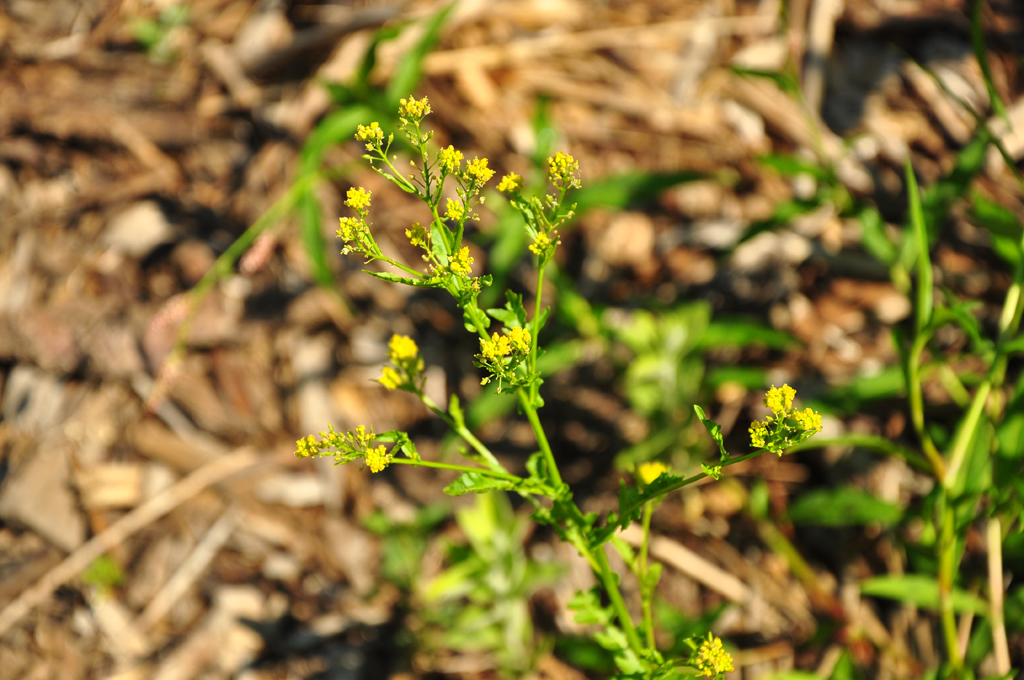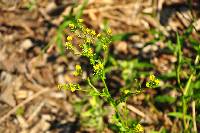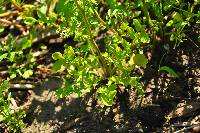Stems often densely hirsute. Leaf blades: abaxial surface often densely hirsute.
Flowering Jun-Aug. Margins of ponds and streams, lake shores, gravelly beaches, roadside ditches, mud flats, wet meadows, stream banks, springy ledges, swamps; Alta., B.C., Man., N.B., Nfld. and Labr., N.W.T., Ont., Que., Sask., Yukon; Alaska, Calif., Colo., Conn., Del., Idaho, Ind., Iowa, Maine, Mass., Mich., Minn., Mont., Nebr., Nev., N.H., N.J., N.Mex., N.Y., N.Dak., Ohio, Oreg., Pa., R.I., Utah, Vt., Wash., Wis., Wyo.
Annual or biennial herb with a taproot to 1 m tall
Stem: upright, branched, and hairy.
Leaves: alternate, pinnately divided (the lower leaves), lance-shaped to oblong- reverse egg-shaped, hairy beneath. The middle stem leaves are generally winged toward the lobed base, looking more or less stalkless.
Flowers: in branched clusters (racemes). Sepals four, ascending. Petals four, yellow, 1.5 - 2.5 mm long, about as long as sepals, bases narrowed. Stamens six.
Fruit: a pod (silique), 2.5 - 9 mm long, more or less round in cross-section.
Similar species: No information at this time.
Flowering: late May to mid-August
Habitat and ecology: Local in wet, often calcareous ground, usually near ponds.
Occurence in the Chicago region: native
Etymology: Rorippa possibly comes from the Latin roro, meaning "to be moist," and ripa, meaning riverbank. Palustris means "marsh-loving." Hispida means bristly.
Author: The Morton Arboretum
Infrequent mostly throughout the northern part of the state although it was collected by Coulter in Jefferson County. It has the habitat of the preceding species [Rorippa sessiliflora] but grows in much wetter places.





